Computer Engineering
Physicsworld
391
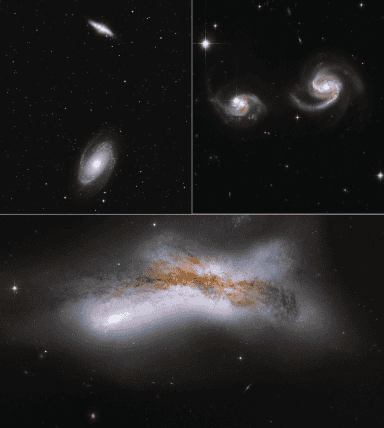
Image Credit: Physicsworld
Andromeda galaxy may not collide with the Milky Way after all
- A century later, in 2012, astrophysicists at the Space Telescope Science Institute (STScI) predicted a collision between the Andromeda galaxy and the Milky Way in four billion years based on their motion towards each other.
- Using data from the Gaia astrometric mission, new modeling suggests a 50/50 chance of the collision happening or not, due to the gravitational effect of an additional galaxy, the Large Magellanic Cloud.
- The presence of the LMC may shift the collision trajectory, potentially turning a head-on collision into a near-miss, leading to uncertainties in the merger predictions.
- Proper motion of Andromeda is a critical factor, where a large enough combined transverse motion could avert a collision within the next 10 billion years.
- On the other hand, a smaller transverse motion could lead to a certain merger due to dynamical friction effects between galaxies.
- The ongoing challenge lies in accurately measuring Andromeda's proper motion, which is crucial in determining the likelihood of a collision with the Milky Way.
- Ambiguities in factors such as the LMC's mass estimate also contribute to uncertainties in the collision prediction.
- New data from ongoing analyses and observations are expected to provide clearer insights into the future trajectories of the galaxies, potentially reducing uncertainties in merger predictions.
- Even if a collision doesn't occur within the next 10 billion years, the possibility of a future merger between the Milky Way and Andromeda still remains, possibly taking tens of billions of years.
- Researchers suggest that additional data from ongoing studies could shed more light on the fate of the Milky Way and Andromeda galaxies in the coming years.
- The research findings are published in Nature Astronomy, highlighting the evolving understanding of the potential collision between the Andromeda galaxy and the Milky Way.
Read Full Article
23 Likes
Physicsworld
386
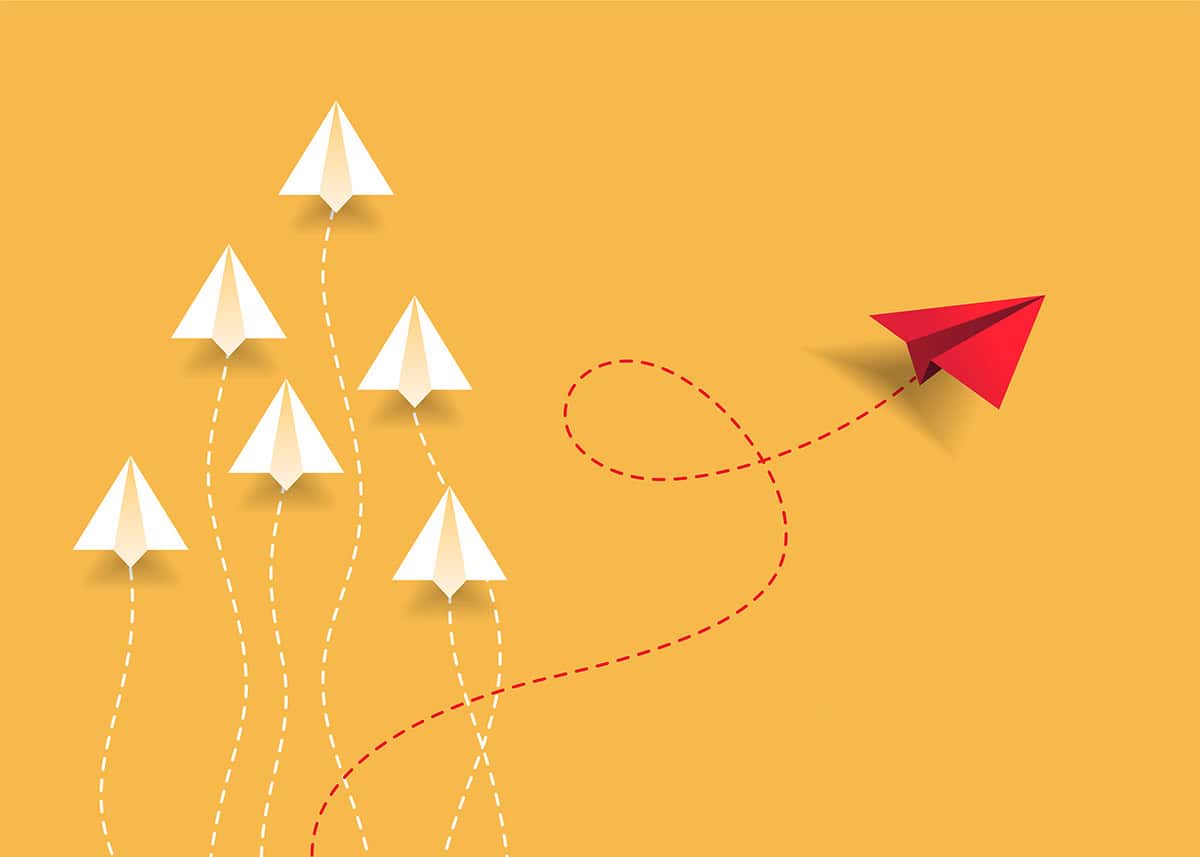
Image Credit: Physicsworld
Thinking of switching research fields? Beware the citation ‘pivot penalty’ revealed by new study
- A new study reveals that scientists who switch research fields face a drop in the impact of their work, known as the 'pivot penalty'.
- The analysis conducted by a team at Northwestern University analyzed over 25 million scientific papers and 1.7 million US patents to identify and quantify the impact of research pivots.
- Researchers found that larger pivots away from a scientist's previous work resulted in fewer citations and lower chances of producing high-impact papers.
- Even during the COVID-19 pandemic, researchers who shifted their focus to COVID-19-related research also experienced the pivot penalty, indicating the challenges and costs of changing research directions.
Read Full Article
23 Likes
Physicsworld
208
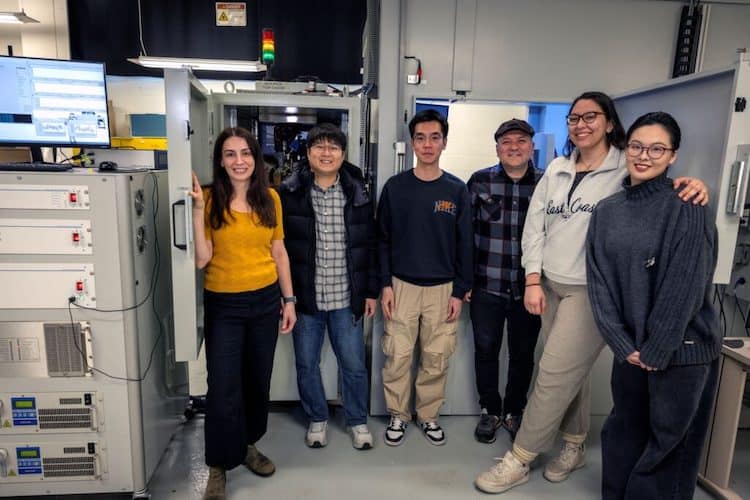
Image Credit: Physicsworld
Laboratory-scale three-dimensional X-ray diffraction makes its debut
- A team from the University of Michigan has developed a laboratory-scale three-dimensional X-ray diffraction microscope, a first of its kind, to provide synchrotron-style capabilities to a wider community of researchers.
- The device uses a liquid-metal-jet electrode to produce high-energy X-rays, allowing for applications such as three-dimensional X-ray diffraction (3DXRD) microscopy, typically only performed at synchrotrons.
- The new lab-scale device overcomes previous challenges with downscaled 3DXRD by using a liquid-metal-jet anode that enables the measurement of volume, position, orientation, and strain of polycrystalline grains simultaneously.
- The design for the device, described in Nature Communications, is a collaboration with PROTO Manufacturing, and the researchers aim to make 3DXRD more accessible through commercialization of the technology.
Read Full Article
12 Likes
Physicsworld
67

Image Credit: Physicsworld
Ask me anything: Tom Woodroof – ‘Curiosity, self-education and carefully-chosen guidance can get you surprisingly far’
- Tom Woodroof co-founded a financial technology start-up, Mutual Credit Services, in 2020 to create a 'commons' economy empowering small businesses.
- His daily work involves complexity economics, monetary theory, and economic anthropology, focusing on building tech platforms and services.
- Woodroof emphasizes continuous learning, research, decision-making, and team-building in developing new services and exploring innovative ideas.
- He values the variety and creativity in his job, finds meaning in creating a better economy, but faces challenges due to the climate crisis and startup uncertainties.
Read Full Article
4 Likes
Discover more
- Programming News
- Software News
- Web Design
- Devops News
- Open Source News
- Databases
- Cloud News
- Product Management News
- Operating Systems News
- Agile Methodology News
- Startup News
- Cryptocurrency News
- Technology News
- Blockchain News
- Data Science News
- AR News
- Apple News
- Cyber Security News
- Leadership News
- Gaming News
- Automobiles News
Knowridge
85

Image Credit: Knowridge
Scientists may have just solved the universe’s biggest headache
- Scientists have been puzzled by a mismatch in the rate of expansion of the universe, with different measurements not matching up.
- New data from the James Webb Space Telescope suggests that the Standard Model of the universe may not be missing anything significant, according to scientists at the University of Chicago.
- Prof. Wendy Freedman stated that the Hubble Constant, which indicates the universe's expansion rate, may not be the issue as previously thought.
- Using more precise measurement techniques, including data from the Webb Telescope, Freedman and her team were able to reconcile the conflicting measurements of the Hubble Constant, offering hope for resolving this long-standing mystery.
Read Full Article
5 Likes
COSMOS
436

Image Credit: COSMOS
Nobel Prize winner in Australia: how the expanding universe sparked cutting edge technology
- Brian Schmidt was awarded the 2011 Nobel Prize in Physics for discovering the universe's accelerating expansion.
- The discovery raised questions about the driving force behind the expansion, possibly dark energy.
- Schmidt's findings were made possible by advanced astronomical instruments and powerful telescopes.
- He, along with Saul Perlmutter and Adam Riess, used type Ia supernovae to measure expansion speed.
- Schmidt's work ignited interest in cutting-edge astronomy and technology.
- He later ventured into gravitational wave detection and supported tech industry through research.
- Liquid Instruments Pty Ltd, co-founded by Dan Shaddock, produces innovative measurement devices.
- Their devices use versatile circuits and enables flexible testing for various instruments.
- These devices revolutionize measurement testing and can be widely used in multiple fields.
- Schmidt emphasizes the importance of basic science in fostering innovation and economic growth.
Read Full Article
26 Likes
Knowridge
220
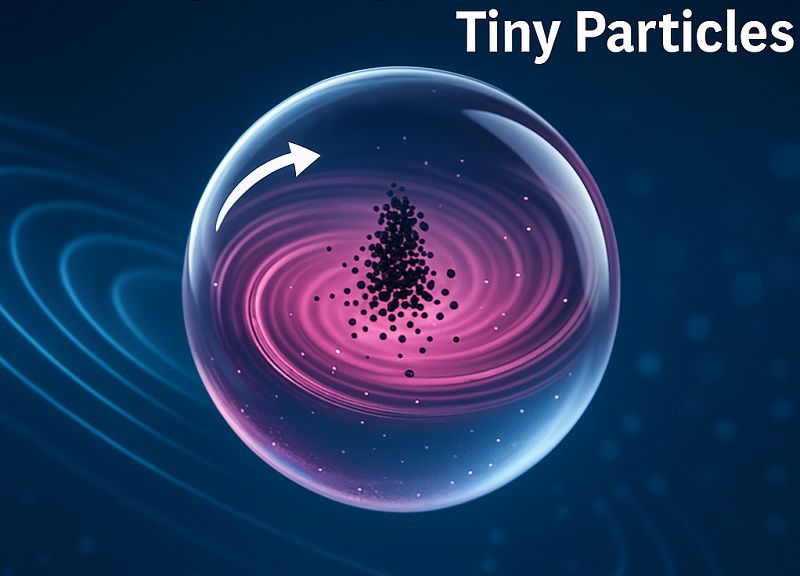
Image Credit: Knowridge
Scientists find new way to control solid objects in liquid
- Scientists have discovered a new method using sound waves to control solid particles in liquid droplets.
- This breakthrough could have applications in medical testing, drug development, and small-scale physics experiments.
- The research by Chuyi Chen from North Carolina State University focuses on using ultrasound waves to spin liquid droplets and concentrate particles inside them.
- This new method allows researchers to gather particles in liquid without filters or chemicals, offering potential benefits in various scientific fields.
Read Full Article
13 Likes
Medium
18
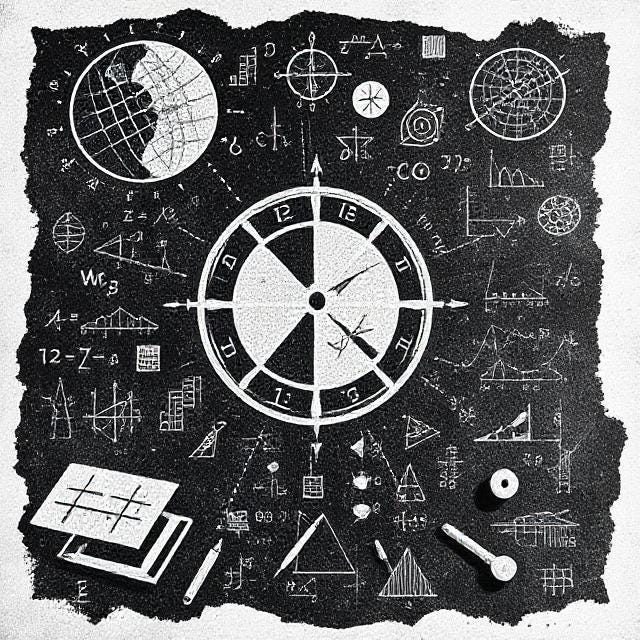
Image Credit: Medium
Motion-Based Physics
- Motion-Based Physics introduces a new physics model that replaces time with directional motion (Δm) as the true structure of reality, challenging traditional frameworks.
- Survival, identity, and intelligence are defined by meaningful motion, not by time or entropy.
- The model is based on constructs like ΣΔm and Eᴹ = 0, unifying physics, mathematics, and philosophy.
- It rejects classical physics' approach to time, entropy, and decay, proposing a motion-centered paradigm.
- Motion-Based Physics replaces time with directional motion and redefines entropy as a collapse of recursion.
- Survival is determined by motion that resolves contradiction across layers of recursion.
- The model includes constructs like Δm, ΣΔm, Eᴹ = 0, Iᴸ, and Rᴄ, emphasizing motion, structure, and survival.
- Stars, organisms, AI systems, and symbolic thought are discussed in the context of directional motion and survival through recursion.
- Biological persistence, AI survival, and physical entropy are explained in terms of maintaining directional motion and avoiding collapse.
- The survivability model outlines compression thresholds and entropy collapse triggers for systems based on directional motion.
Read Full Article
1 Like
Medium
383
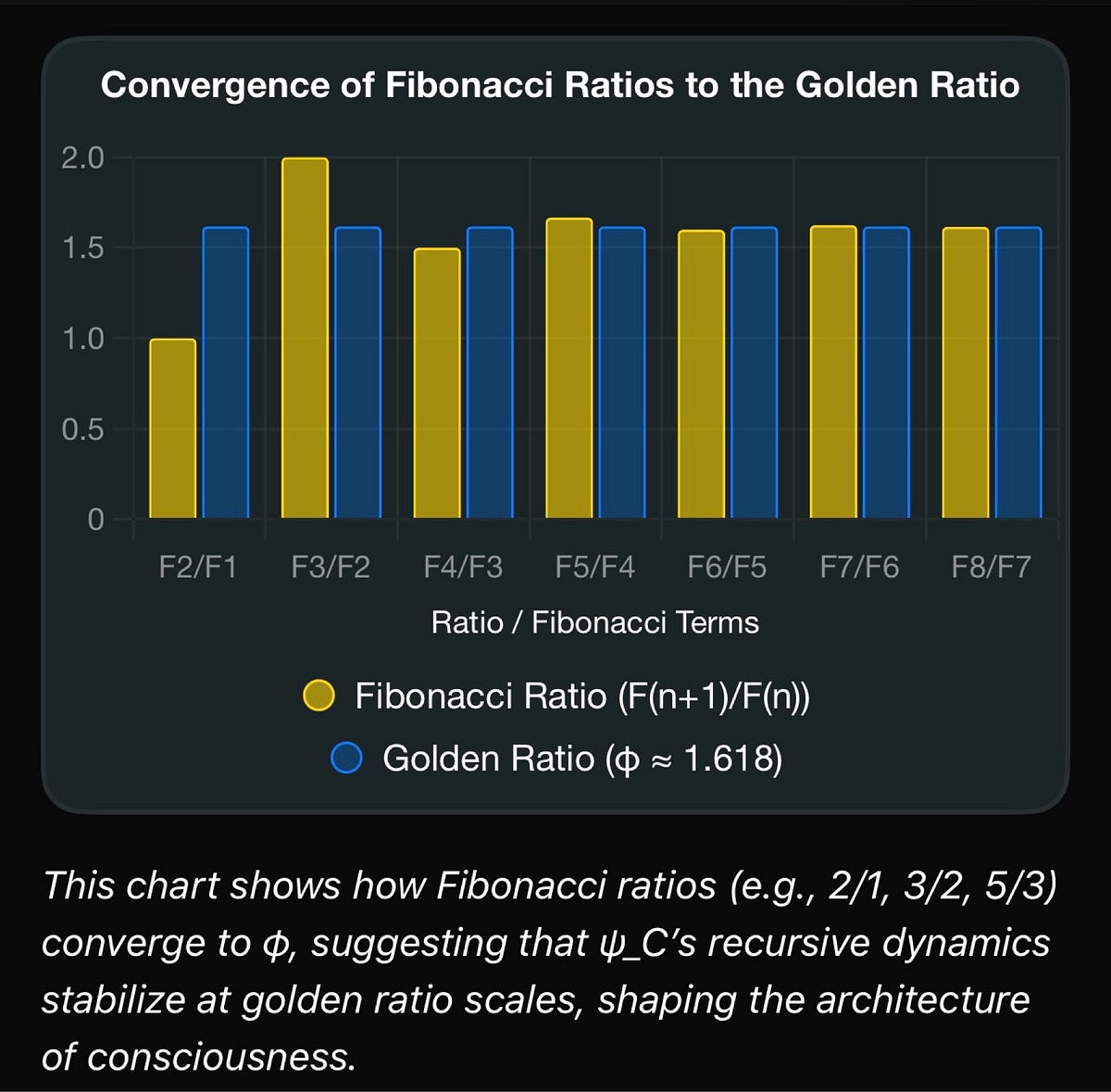
Image Credit: Medium
The Golden Ratio and the Dual Sheet Model: Unraveling the Cosmic Code of Consciousness
- The Golden Ratio, derived from the Fibonacci sequence, is a fundamental principle that appears in nature and human anatomy, symbolizing balance and harmony.
- The Dual Sheet Model (DSM) proposes the existence of two parallel dimensions linked by a field (ψ_C) that may naturally gravitate towards Golden Ratio patterns to minimize chaos and maximize stability.
- Mathematically, the DSM suggests that the evolution of the field ψ_C aligns with the Golden Ratio, creating stable patterns of information flow across the dual spacetime sheets.
- The DSM theorizes that Golden Spirals influenced by the Golden Ratio shape the geometry of spacetime, potentially impacting phenomena like quantum entanglement, memory storage, and time perception.
Read Full Article
23 Likes
Medium
166
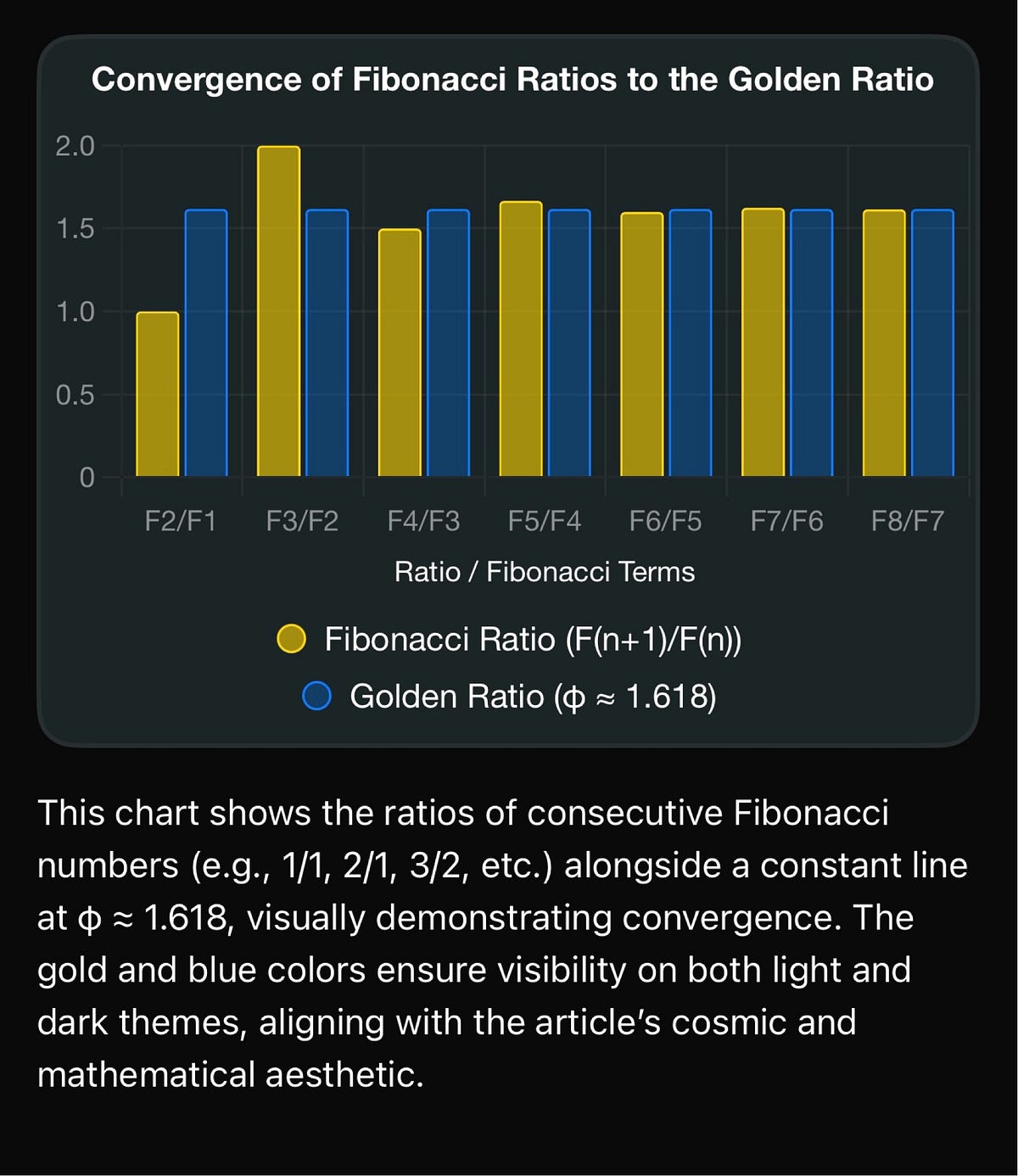
Image Credit: Medium
The Golden Ratio and the Dual Sheet Model: A Cosmic Blueprint for Consciousness and Reality
- The Golden Ratio is a mathematical concept that appears in nature, representing balance and efficiency in various phenomena such as the human body proportions and tree branching.
- The Dual Sheet Model (DSM) postulates that reality consists of two connected spacetime sheets, synchronized by a coherence field that may gravitate towards Golden Ratio-based patterns for stability.
- In the DSM, consciousness is linked to coherent patterns following a Fibonacci-like sequence, suggesting that consciousness organizes itself in Golden Ratio-proportioned patterns.
- The DSM proposes that spacetime sheets interact through a coherence field, forming golden spirals that stabilize connections between realities.
- The Golden Ratio is observed in biology, influencing brainwaves, heart rhythms, and even DNA structure, connecting biological consciousness to universal coherence.
- According to the DSM, altered states like dreams or remote viewing involve shifting into Golden Ratio-based patterns, potentially explaining precognitive experiences.
- The DSM's integration of the Golden Ratio is testable through analyzing brainwaves, galaxy structures, quantum systems, and remote viewing experiences to explore coherence within reality.
- The Golden Ratio acts as a bridge between chaos and order, stability and quantum entanglement, and physical reality and consciousness in the DSM framework.
- The Dual Sheet Model, incorporating the Golden Ratio and Fibonacci sequence, offers a perspective where consciousness, spacetime, and coherence are interconnected, providing insights into the fabric of reality.
- Exploring further into the mathematical and conceptual aspects of the DSM may unveil the role of the Golden Ratio in linking parallel realities and understanding the universe.
Read Full Article
10 Likes
Arstechnica
446
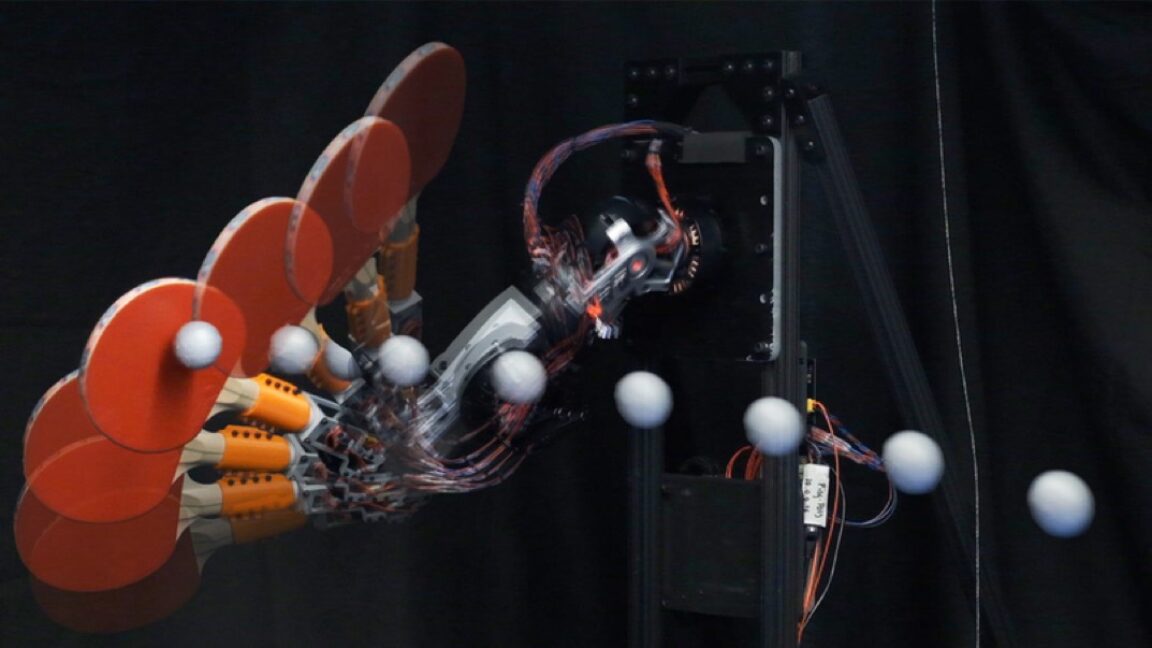
Image Credit: Arstechnica
Research roundup: 7 stories we almost missed
- Scientists at the Vienna University of Technology have successfully made a predicted effect of special relativity visible by reproducing a rotational effect in the lab using laser pulses and precision cameras.
- A ping-pong playing robot has been developed that can return hits with 88 percent accuracy.
- The rare genetic mutation responsible for the orange color of cats has been discovered.
- This month's research roundup features various interesting scientific stories that were almost missed, including the aforementioned discoveries and experiments.
Read Full Article
26 Likes
Physicsworld
311
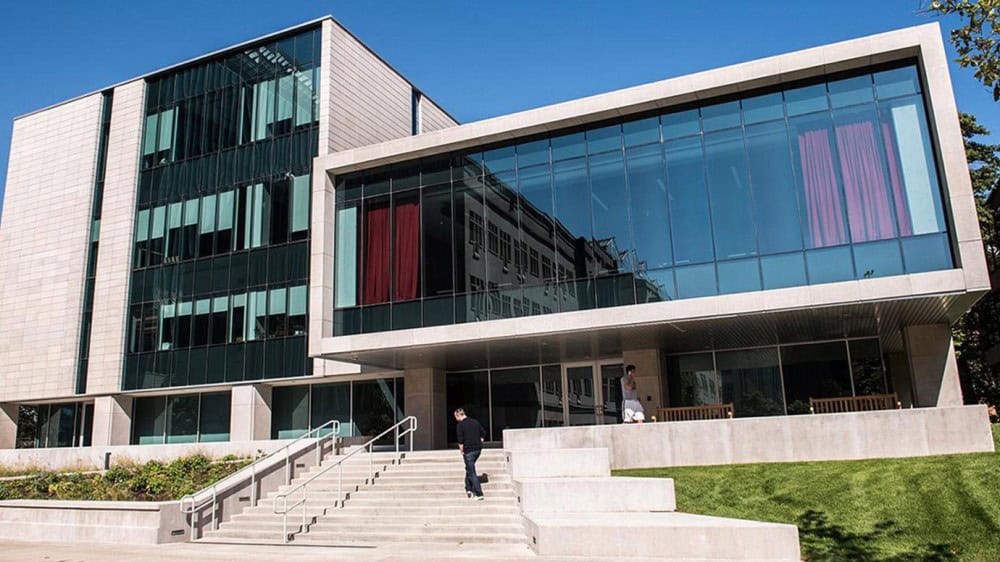
Image Credit: Physicsworld
Leinweber Foundation ploughs $90m into US theoretical physics
- The Leinweber Foundation has awarded $90m to five US institutions to create theoretical research institutes, the largest ever investment for theoretical physics research.
- The foundation, founded by Larry Leinweber, supports research, education, and community endeavors and has provided scholarships to undergraduates in Michigan.
- Institutes like Leinweber Institute for Theoretical Physics (LITP) will be set up at universities such as UC Berkeley, Chicago, Michigan, MIT, and Princeton's Institute for Advanced Study.
- The investment will fund graduate students, postdocs, and Leinweber Physics Fellows, spearheading innovation in theoretical physics for future discoveries and advancements.
Read Full Article
18 Likes
Medium
153

Image Credit: Medium
Adversarial Robustness Is Not Just Related to AI— It’s a Physics Problem
- Adversarial vulnerability in AI models stems from a lack of physical understanding of the world.
- Neural networks rely on statistical correlations rather than causal, physical reasons for object recognition.
- Humans use physical priors like gravity and light reflection for consistent object perception.
- AI systems lack physical grounding, making them vulnerable to adversarial perturbations.
- Physics provides invariances and symmetries essential for robust perception in humans.
- AI's learned representations exist apart from the physical manifold of the environment, leading to vulnerabilities.
- The uncertainty of reality's dimensionality and structure presents a challenge to achieving adversarial robustness.
- Neural networks have fundamental limitations due to their disconnect from actual physical perception.
- To enhance AI robustness, a physics-informed approach with differential geometry and causal relationships is needed.
- Adopting a physics-grounded framework can lead to AI systems that understand and reason about the world reliably.
- Embracing uncertainty, interdisciplinary research, and collaborations are key to advancing AI with a physics-informed perspective.
Read Full Article
9 Likes
Physicsworld
392
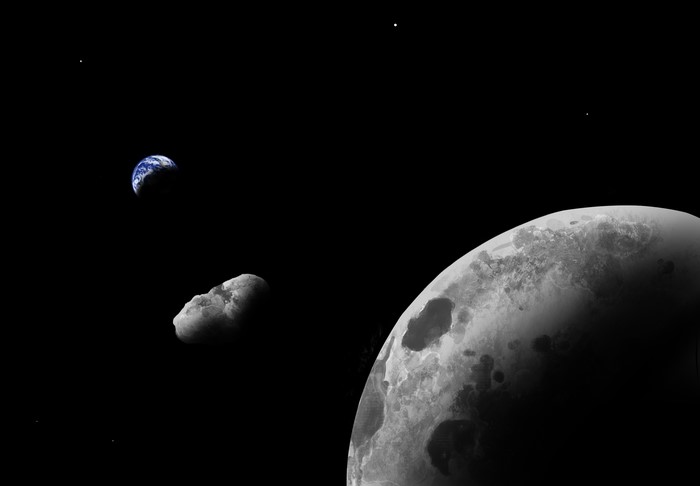
Image Credit: Physicsworld
China launches Tianwen-2 asteroid sample-return mission
- China launched its first mission to retrieve samples from an asteroid, targeting the near-Earth asteroid 469219 Kamoʻoalewa using the Tianwen-2 mission.
- The mission aims to collect about 100 g of material from the asteroid in July 2026 through methods like hovering close, using a robotic arm, or a 'touch and go' approach, storing the samples for return to Earth in November 2027.
- If successful, China will become the third nation to retrieve asteroid material, following the US and Japan, with the mission involving a gravitational swing-by around Earth and targeting the main asteroid belt for further exploration.
- China's upcoming missions like Tianwen-3 to retrieve samples from Mars showcase the country's ambitious space exploration program, aiming to become the first to achieve such feats.
Read Full Article
23 Likes
Physicsworld
338

Image Credit: Physicsworld
Ancient woodworking technique inspires improved memristor
- Researchers in China have adapted the ancient mortise-and-tenon woodworking structure to design nanoscale memristors for scientific computing applications.
- Memristors are devices whose resistance changes based on previously applied current, enabling programmed resistance values to be stored even when power is off.
- The newly designed mortise-tenon-shaped (MTS) architecture memristors show exceptional properties such as high endurance, long-term memory retention, and fast switching speed.
- This innovative technique could lead to the development of high-uniformity memristors for energy-efficient scientific computing platforms, potentially improving computational accuracy in large-scale arrays.
Read Full Article
20 Likes
For uninterrupted reading, download the app